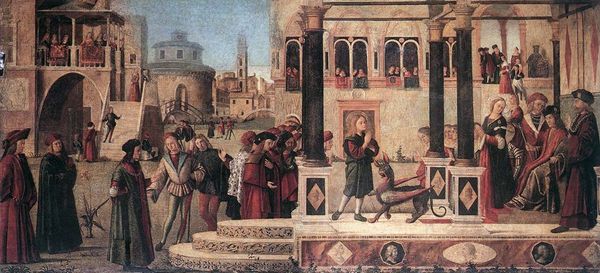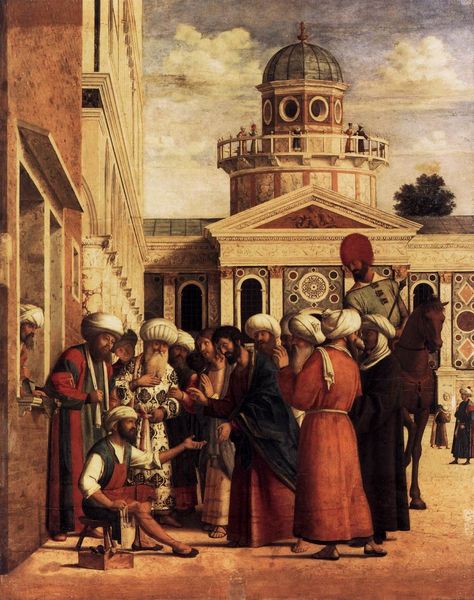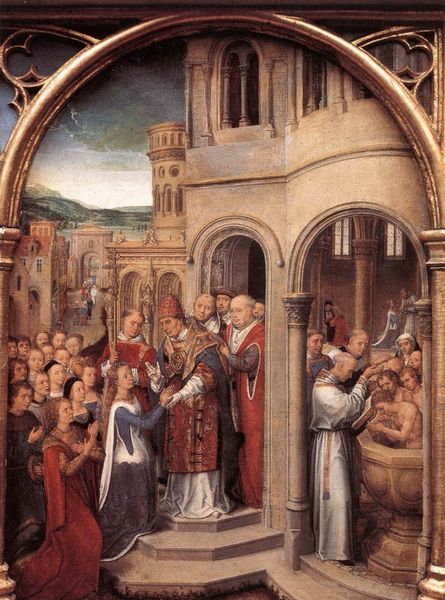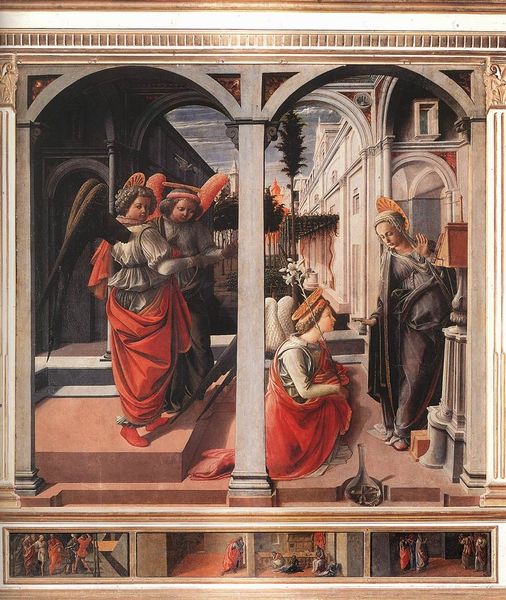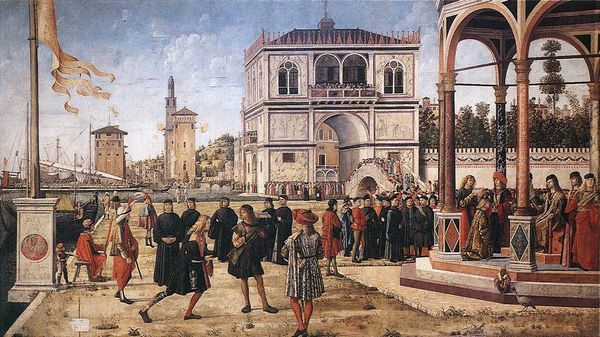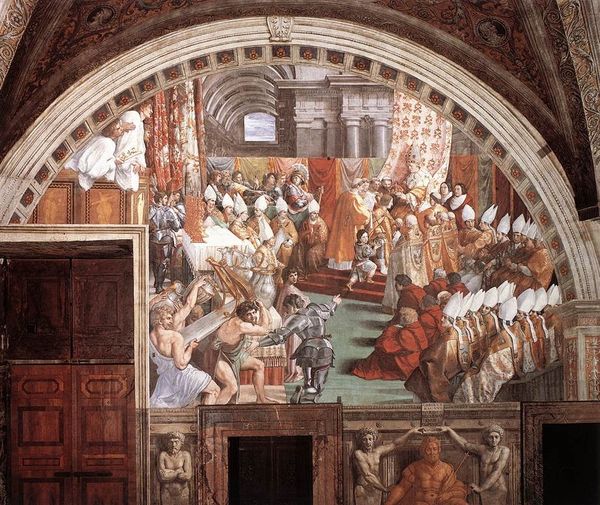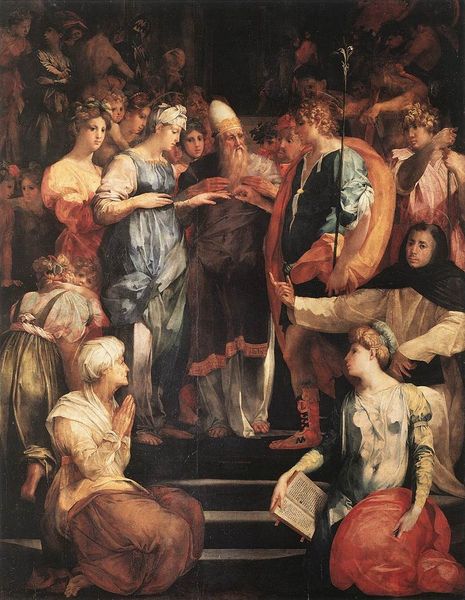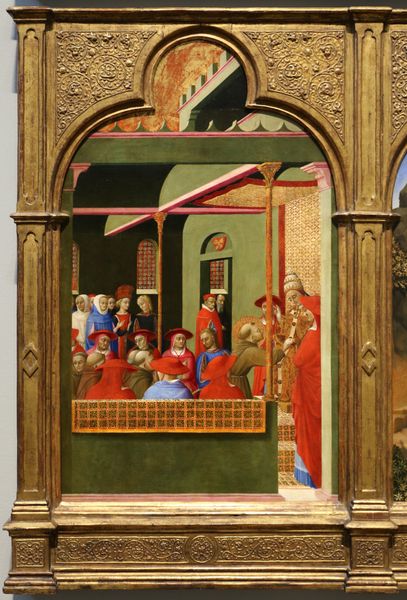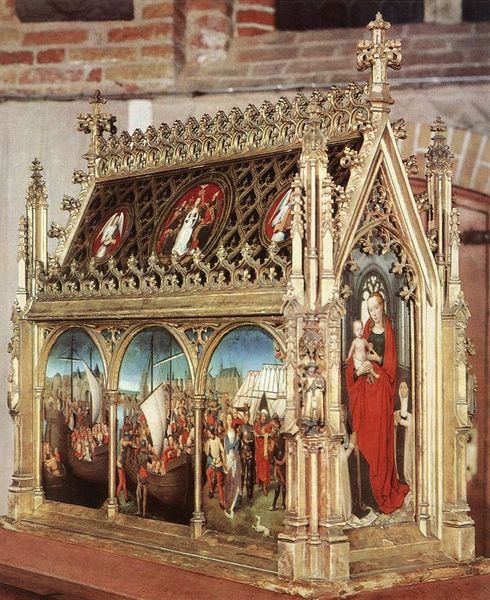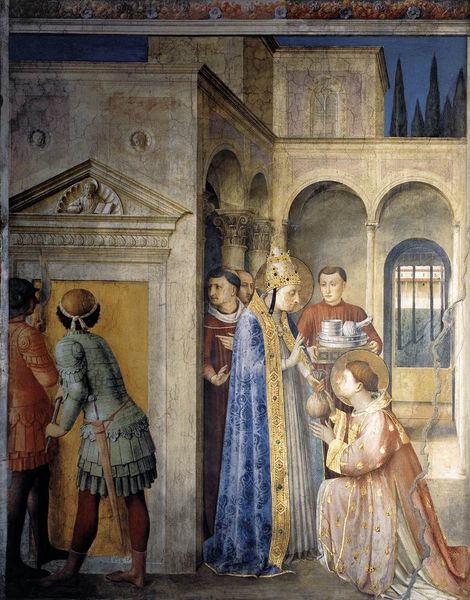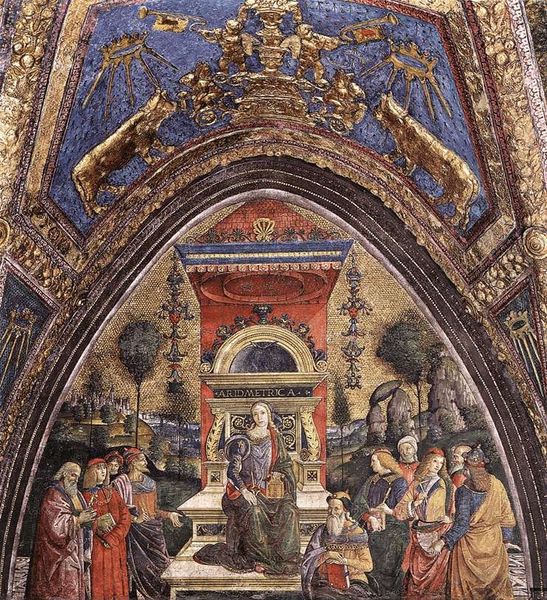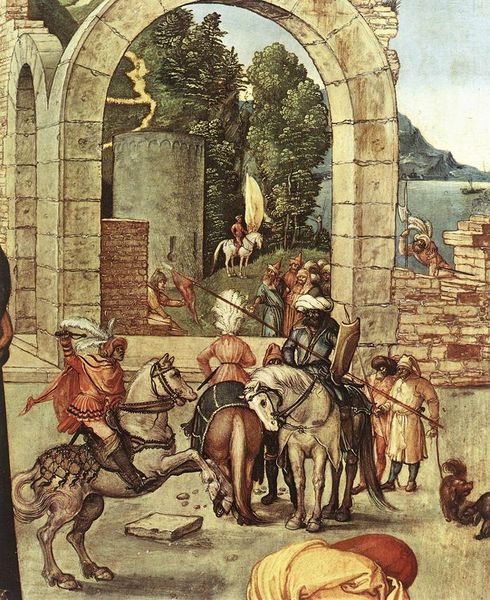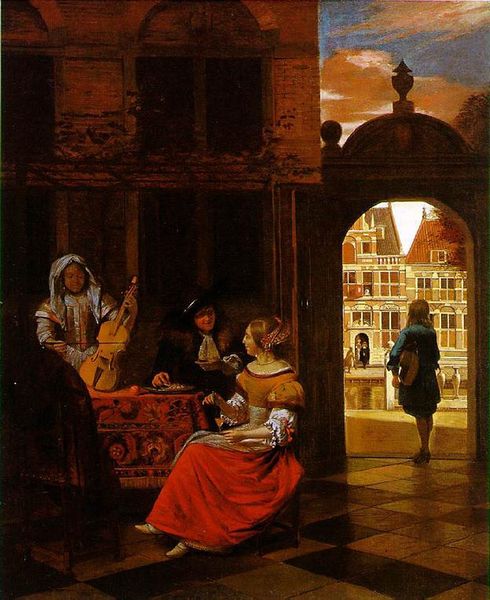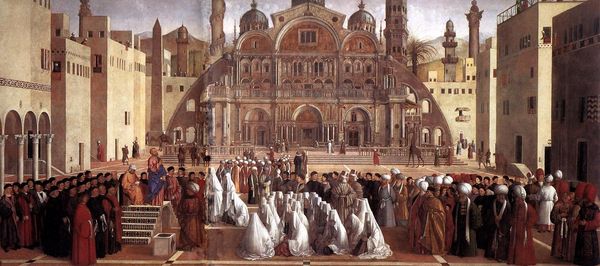
painting, oil-paint, architecture
#
narrative-art
#
painting
#
oil-paint
#
oil painting
#
history-painting
#
italian-renaissance
#
early-renaissance
#
architecture
Dimensions: 35 x 36 cm
Copyright: Public domain
Editor: This is Gentile da Fabriano's "Pilgrims at the Tomb of St. Nicholas of Bari," painted around 1425 using oil paint. There's almost a documentary feel to it, observing a crowd of people within this incredible architecture. How would you interpret it? Curator: I'm immediately struck by the tension between the opulent setting, presumably built by skilled artisans, and the apparent toil of the figures present. Consider the economic system that afforded the patronage of such artistry. How does the oil paint itself—a relatively new medium at the time—contribute to the glorification of the event depicted, and who could afford such a work? Editor: So, it's not just about the pilgrims but the societal structure enabling its creation? Curator: Exactly. Look closely at the materials. Oil paint allowed for richer colors and greater detail compared to tempera. This visual splendor, bought and paid for, depicts labor (the transportation of the body). I'd suggest that Fabriano wants us to see the connection between artistic production and other forms of labor and also think about its impact on faith. Who benefits most from this system? Editor: The Church, of course, solidifying its power. And I guess by looking at who commissioned this painting, we could also learn more about who had the means to broadcast that message? Curator: Precisely. Consider this panel not just as a devotional image, but as a product of its time – an intersection of religious belief, artistic skill, and economic power. Editor: That gives me a lot to think about regarding art's role as both a reflection and a shaper of society. Curator: Indeed. Reflecting on the means of its production is crucial to understanding its purpose and impact.
Comments
No comments
Be the first to comment and join the conversation on the ultimate creative platform.
